Abominable Science!: Origins of the Yeti, Nessie, and Other Famous Cryptids, by writer, illustrator, and skeptic Daniel Loxton and paleontologist, geologist, and author Donald R. Prothero; Foreword by science writer and historian of science Michael Shermer.
Available on Amazon USA and UK.
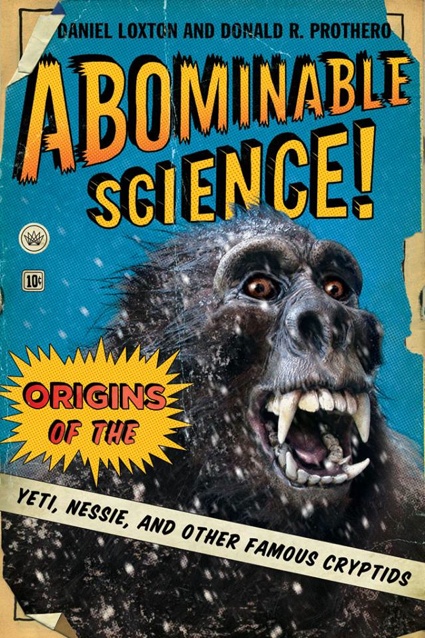
Publisher Columbia University Press writes: Daniel Loxton and Donald R. Prothero have written an entertaining, educational, and definitive text on cryptids, presenting the arguments both for and against their existence and systematically challenging the pseudoscience that perpetuates their myths. After examining the nature of science and pseudoscience and their relation to cryptozoology, Loxton and Prothero take on Bigfoot; the Yeti, or Abominable Snowman, and its cross-cultural incarnations; the Loch Ness monster and its highly publicized sightings; the evolution of the Great Sea Serpent; and Mokele Mbembe, or the Congo dinosaur. They conclude with an analysis of the psychology behind the persistent belief in paranormal phenomena, identifying the major players in cryptozoology, discussing the character of its subculture, and considering the challenge it poses to clear and critical thinking in our increasingly complex world.
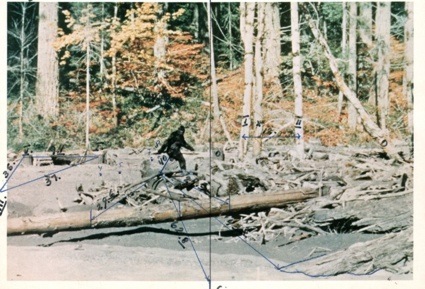 The Patterson-Gimlin film is a short motion picture of a “Bigfoot”, that was supposedly filmed on October 20, 1967, by Roger Patterson and Robert Gimlin, in California
The Patterson-Gimlin film is a short motion picture of a “Bigfoot”, that was supposedly filmed on October 20, 1967, by Roger Patterson and Robert Gimlin, in California
Leonard Nimoy narrates the episode dedicated to Bigfoot in the TV series In Search Of…
Abominable Science! was supposed to be a harmless, laid-back and jolly lecture. I knew nothing of the Great Sea Serpent, the Mokele Mbembe, i had barely heard of Bigfoot and the Yeti but i’m quite the fan of Nessie. So surely, this book should have been an inoffensive ride. No one believe in those monsters, right?
Wrong! Daniel Loxton reveals that when asked “Do you think Bigfoot (also known as Sasquatch) is real?” in a 2012 poll, 7 percent of American respondents answered that Bigfoot “Definitely is real,” and 22% said Bigfoot “Probably is real.” Don’t snort! i just found out that 24% readers of The Guardian (at least the ones who bothered to participate to the poll) believe in the existence of the creature.
I grew even more uncomfortable when i read in the book that Young Earth creationists are actively looking for surviving dinosaurs in the hope that the discovery of an Apatosaurous-like animal in Congo will bring the definite proof that the theory of evolution is a big fantasy.
Abominable Science! is as much about absurd creatures as it is about pseudoscientists making radical claims about the world, writing off evidence-based research and undermining the teaching of science in the process.
In an interview about the book, Donald R. Prothero said: “To me, the sad aspect of cryptozoology is that they practice “sham science”: they adopt the trappings of science (fancy cameras and sound recording equipment, night-vision goggles, camera traps, sonar, other devices) without following the methods of science, especially the idea of testing and shooting down hypotheses that have failed, and getting rid of ideas when they have been decisively debunked. This indeed reflects badly on the scientific literacy of Americans, since they don’t understand that science is not about white lab coats and bubbling beakers. It is about the methods you use to investigate claims, and the willingness to admit you’re wrong and throw out bad ideas when they fail.”
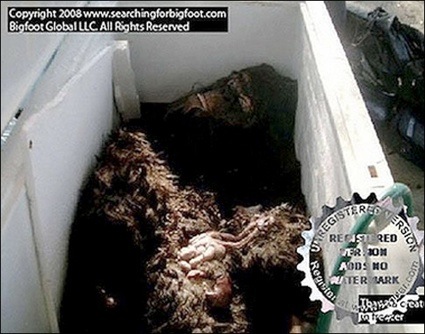 Image released by “Bigfoot’s” finders at a press conference in August 2008
Image released by “Bigfoot’s” finders at a press conference in August 2008
The press isn’t doing a great job for the advance of science and human progress either when they cover stories such as the one that made the headlines a few years ago when a policeman and a former corrections officer claimed that they had discovered the body of Bigfoot. Media outlets, from CNN to BBC, reported the news which, unsurprisingly, was a hoax.
Prothero wrote some of the chapters in the books. Loxton wrote the rest. The scientist is inflexible in his belief that giving too much credit to the existence of those monsters does more harm than good. Loxton, however, is more tolerant. He has learnt that these fantastical creatures do not exist but he is still much seduced by the stories that surround them.
And indeed the book contains plenty of interesting stories:
This 1951 photograph of a purported Yeti footprint was auctioned off at Christie’s London for £3,500.
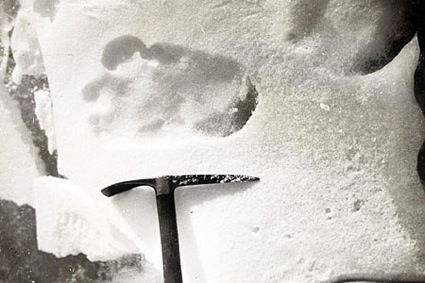 Eric Earle Shipton, Yeti footprints in the Menlung Basin, 1951
Eric Earle Shipton, Yeti footprints in the Menlung Basin, 1951
This famous photograph of the monster of the Loch Ness was taken by Colonel Robert Wilson in April, 1934. He later admitted that he had built a small model monster around a toy submarine.
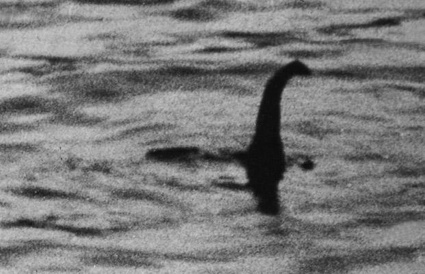 Robert Wilson, Nessie, 1934
Robert Wilson, Nessie, 1934
There have been plenty of Nessie “sightings: throughout history. One of my favourite is the one that ‘shows’ Nessie on Google Earth. But the more sophisticated the technology, the less evidence was found of the existence of those monsters. In 1987, for example, Operation Deepscan took place. Twenty-four boats equipped with echosounder equipment were deployed across the whole width of the loch and they simultaneously sent out acoustic waves.
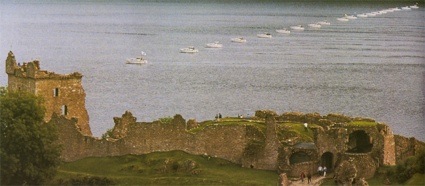 Operation Deepscan, 1987
Operation Deepscan, 1987
Amusingly, some theories propose that the monster is actually a camel able to stay for long periods of time in and under water.
Other believe that Nessie is a survivant variant of the Plesiosaurus. Just like the Zuiyo-maru creature, a carcass caught by the Japanese fishing trawler Zuiyō Maru off the coast of New Zealand in 1977. Analysis later indicated it was most likely the decomposed carcass of a basking shark.
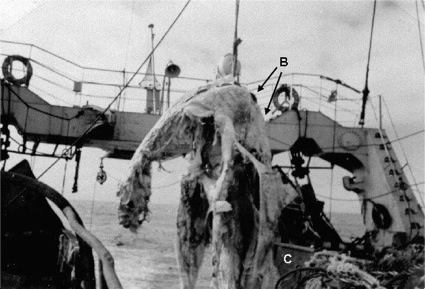 Photograph of the front of the Zuiyo-maru carcass. Taken by Michihiko Yano, April 25, 1977
Photograph of the front of the Zuiyo-maru carcass. Taken by Michihiko Yano, April 25, 1977
I also liked to follow the hunt for the Mokele-mbembe which Americans and Europeans have been searching for in Congo, often to the dismay of local populations. The creature is believed to be a surviving brontosaurus.
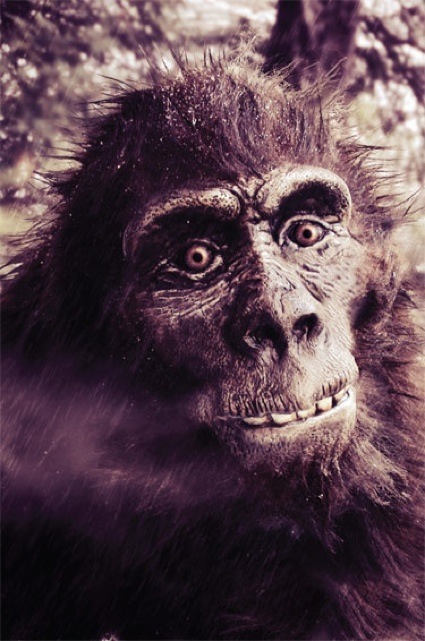 Daniel Loxton’s drawing of the Yeti included in Abominable Science!
Daniel Loxton’s drawing of the Yeti included in Abominable Science!
Interview with the authors.
